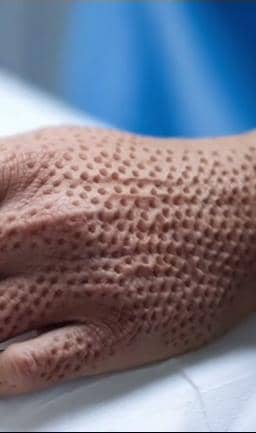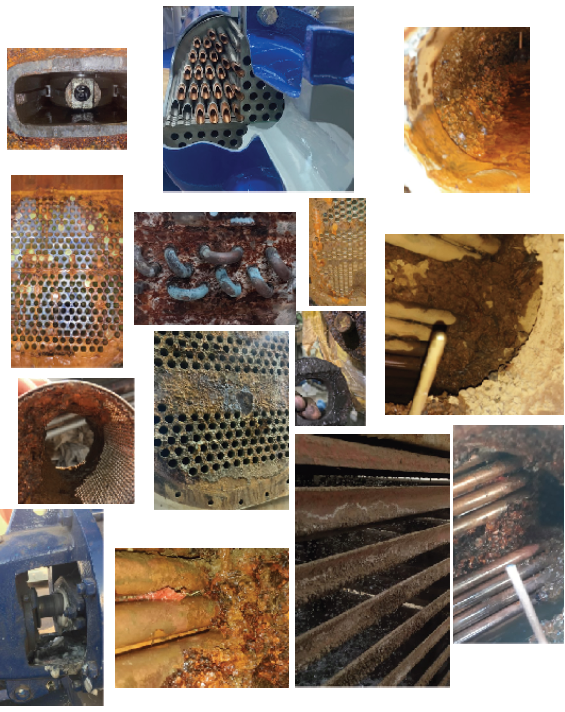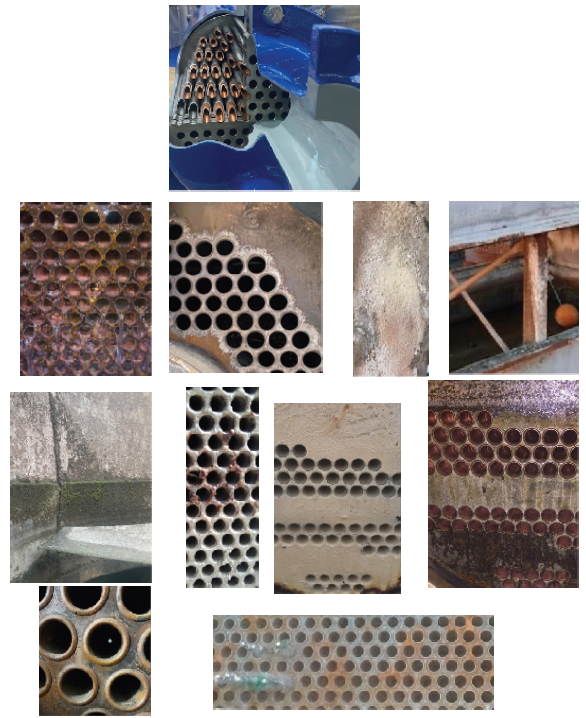رغوة برج التبريد

Foaming Cooling Tower
Understanding Foam
Foam formation requires the presence of a surfactant (surface active agent) to lower air-water interface surface tension. As well, movement such as turbulence is required to mix air into the water.
Foam can be white, or take on the color of contaminants present in the cooling water. It can be light and frothy, or thick like a slurry. These observations can be of use in helping troubleshoot the source.
Foaming Causes
There are multiple reasons for a cooling tower to have foaming. Your cooling tower may have one or a combination of these causes at work. Causes for cooling tower foaming can include:
- Chemical overfeed,
- Over cycling,
- Excessive suspended solids,
- Protein byproducts from microbiological growth,
- High alkalinity,
- Process contamination, and
- Surfactants.
Chemical Overfeed
An overfeed of biocide or treatment chemical can cause foaming. Reduce the chemical feed, blow down the cooling tower, and add an antifoam if necessary. It usually does not take much antifoam to work, so be careful not to add too much antifoam because this can cause foaming too. (If you do not have an antifoam on-hand, WD-40 has antifoam properties and will work in a pinch. Be aware that this adds oil to the system though.)
Over Cycled
An over cycled cooling tower can foam. Blowdown the system to within control parameters.
Excessive Suspended Solids
Excessive suspended solids in a cooling tower due to nearby construction, a nearby dirt road, grain unloading, a dry summer, etc. can cause foaming in the cooling tower. Remember that cooling towers act as air scrubbers too. Any dirt in the air will eventually end up in the
cooling tower water. Eliminate the source of the suspended solids, blow the system down, or use an antifoam.
Protein Byproducts from Microbiological Growth
If your tower has excessive microbiological growth, their waste and decomposition byproducts can cause "protein foam" in your cooling tower. Also, if your tower uses an intermittent biocidal feed instead of a continuous feed, the decomposition products during these biocidal events can cause "protein foam" in the cooling tower. Re-evaluate your biocide program and use an antifoam if necessary.
High Alkalinity
High alkalinity in a cooling tower can cause foaming. This can be especially true when softened, non-degasified reverse osmosis concentrate is used as makeup to the cooling tower. Because the RO concentrate is soft water, you may be able to run at higher alkalinity levels; however, higher alkalinity can cause foaming. Re-evaluate your control parameters and increase blowdown if necessary to reduce foaming.
Process Contamination
Process contaminants such as oil can cause foaming in the cooling tower. Eliminate the contamination, blowdown the cooling tower to remove the contaminant, and use an antifoam if necessary.
Surfactants
Often times cooling tower sumps are located in the floor of a facility. If the floors are washed down with detergents, these detergents can end up in the cooling tower
sump and cause foaming. Also, never rule out the possibility that someone has simply poured a bottle of soap into your system. In an industrial setting this is probably not a possibility, but in a commercial or college setting you never know. Remove the surfactant if possible, blowdown the cooling tower, and use an antifoam if necessary.
Conclusions
As you can see, cooling tower foaming can have many causes and is the end result of other problems rolex replica that need to be addressed. Cooling tower foaming can damage nearby equipment, ruin paint on cars, and may even be an inhalation source for Legionella bacteria.
The “big picture” when dealing with a foaming cooling tower is as follows, but will be unique for each system.
- Return the cooling tower to normal operating parameters.
- Eliminate the source of the foam.
- Blowdown the system to remove foam-causing contaminants.
- Apply antifoams/defoamers as required
حقوق الطبع والنشر © Raduis AK, جميع الحقوق محفوظة.



